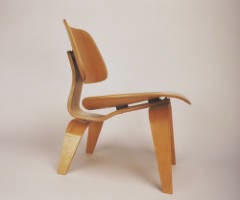Lesson 8—WorldCat, CAMIO and More
World Cat
I was not able to log in to Worldcat using my library card and password.
I was able to complete the following without logging in to my library account.
I was able to complete the following without logging in to my library account.
1. We recommend using the Advanced Search screen for best
search results. Click the “Advanced” tab on the toolbar 2nd to the top. In
WorldCat, the right set of search boxes say “Keyword.” Click on the drop down
menu to see other ways you can search.
Worldcat offers a variety of options to search, title, isbn, author, etc. This makes it reletively easy to track down a book/publication.
2. Choose Title Phrase search, and click on the limiter
(below the search boxes) “Books.” In the search box, type a book title. Note
the number of results. How many libraries worldwide have item #1? Click the
link. What is the top library?
I searched for a title that I just finished. The title was only available in English and available as a book and ebook. The search retrieved 4 results. I did not see a list of worldwide holdings for this title.The top library was University of Washington Libraries in Seattle, Washington.
3. Click into result #1 and look at the full record. What is
the call number (class descriptor)? To see what else the author of your chosen
book has written, click on the author's name. To see what else is available on
that subject, click on a subject. What other information do you see?
CAMIO
1. In the search box, type “Sioux.” Click on an image and
notice what information is given and how you can manipulate the image. Blog
about your results.
As I scrolled through the images and search results, my
eye was drawn to an amazing writing table. According to the object description,
the table (or Bonheur-de-Jour) was created by Michael Gabriel Commelin in
France between 1777 and 1780. The object description also includes all the
additional artisans that played a role in creating the piece. The piece is part
of the Philadelphia Museum of Art and was acquired from the donor Eleanor
Elkins Rice in 1939. The object description also includes the building
materials and dimensions of the writing desk.
Using the tools in the image window I can scan the object
and also zoom in. I can also view the image in its own browser window, adjust
the size of the image, rotate the image, download, and print the image. An
additional image provides a detail of the beautifully painted porcelain and
bronze detail.
By clicking on any of the highlighted sections within the
object description I can find other pieces from the Philadelphia Museum of Art
or more works by the same artist.
I could also find that this image is licensed for
non-commercial, educational use, with proper citation.
2. How would you and your community use this resource? What other observations
can you make?
I would define “our community” as the staff of and visitors to the South Dakota
Cultural Heritage Center. I believe that for educational programs, discussions,
and research this would be a vital tool. Using the resources from other institutions
this community can compare and contrast works of art with our own and further understand
the artifacts that make up our collection.
In a broader sense, I believe this tool is invaluable for
learning about the arts and cultures that make up our global landscape. Taking
the time to better know and understand the artifacts, works of art, and
materials of past cultures and other modern cultures helps us to better
understand who we are and where we come from.
3. CAMIO has a lot of potential for personalizing and presenting research. Do a search on a subject of your choice. Choose 3 or 4 favorites by checking the box to the left of the image number. Click "Save to Favorites"on the toolbar at the top of the results next to "Relevance" and "Display Options." Then click "Favorites" in the gray bar in the upper right of the screen. On the left sidebar, click to export to PowerPoint or Zip Archive File. This allows you to manipulate and use the images in a variety of ways. Try out these features and report your findings.
American designer, Charles Eames, is one of my favorite
designers. I ran a search on his name in CAMIO to see what would come up.
Although the search did not bring up many results, the results were all iconic works.
I chose to export my findings as a PowerPoint file. This is a great feature! The
slides created include the link back to CAMIO and information on each of the
pieces. This would be a great way to pull artwork into any presentation. Again
a great tool to compare and contrast works of art from around the globe with
those in local collections or to teach about the arts and cultures that make up
our global landscape.
LCW chair (Lounge Chair Wood)
Dallas Museum of Art, Dallas,
Texas, USA
Licensed for non-commercial, educational use. http://www.dallasmuseumofart.org/


Great post! We've communicated about the WorldCat login and I think I understand where the issue is. To login to WorldCat's "My Account" one needs to create an account. To access WorldCat many times, one needs to type in the barcode/password (that you would see when accessing the resources from home); because you have been in the resources so much, there may be an old cookie that is allowing you to access WorldCat. Hopefully the State Library barcode/password we exchanged today will help clear that up.
ReplyDeleteYour discoveries in CAMIO are fabulous--I'm glad you were able to find a designer you like. As you noted, CAMIO didn't have all his work but it did have selected works. Thanks so much for this interesting post, Julie